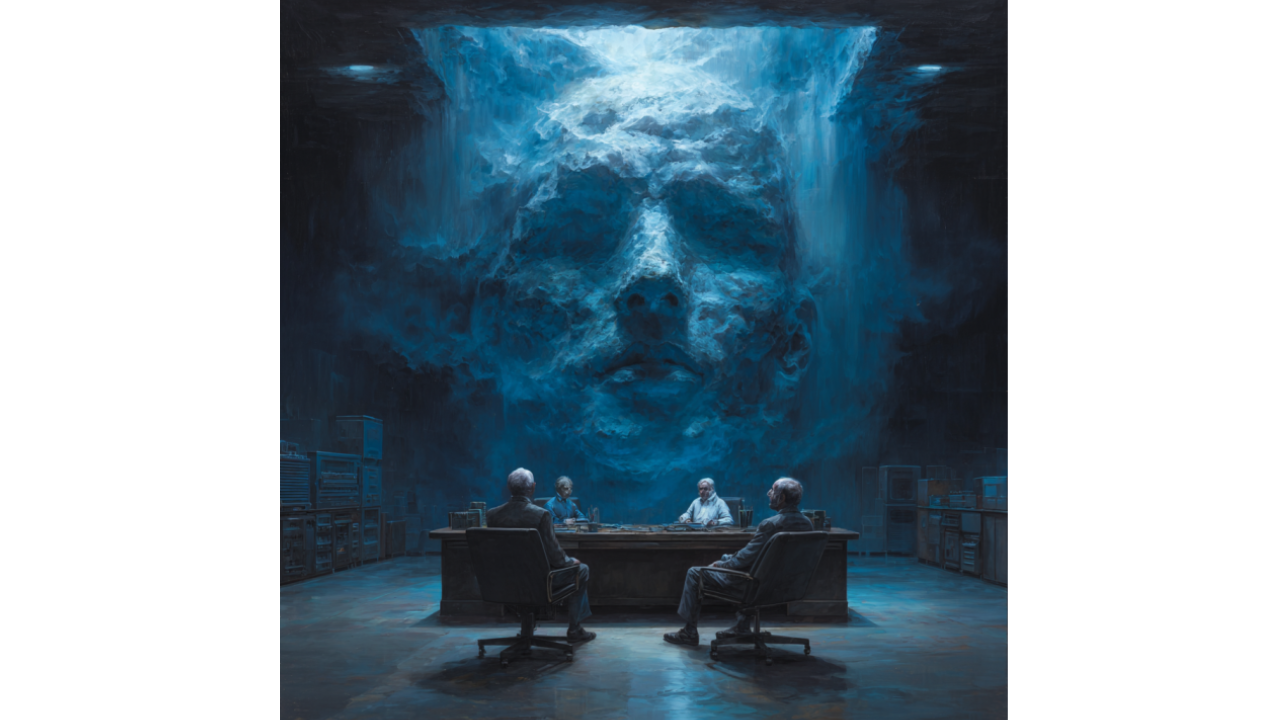"AI Will Replace Everyone" or "it's Just Hype"? We're Exhausted
We're not just in a hype cycle—we're in a hype whiplash. Every week brings a new "revolutionary" breakthrough that supposedly changes everything,...
-3.png)
Everyone's talking about the wrong part of Andy Jassy's memo. Yes, Amazon's CEO told employees that AI will "reduce our total corporate workforce" in the coming years. But buried in that message is the most important leadership insight of our time: the companies that win in the AI era won't be the ones with the best technology—they'll be the ones with leaders who can transform themselves and their organizations faster than disruption itself.
The Hidden Signal in Jassy's Message
While headlines focus on workforce reduction, Jassy's memo reveals something far more strategic. He's essentially announcing that Amazon is betting its future on leaders who can "get more done with scrappier teams" and "figure out how to invent for our customers more quickly and expansively." This isn't just cost-cutting—it's a fundamental reimagining of what leadership looks like when AI becomes your competitive advantage.
The numbers back up this shift. Almost 90 percent of leaders anticipate that deploying AI will drive revenue growth in the next three years, according to McKinsey. But here's the kicker: nearly 70 percent of transformations fail. The difference between success and failure isn't technical—it's leadership.
Jassy's memo echoes what psychologist Carol Dweck wrote in "Mindset: The New Psychology of Success"—"Becoming is better than being." In the AI era, this isn't just inspirational; it's survival. Leaders who built their identities around being experts, having all the answers, and optimizing existing systems are facing an existential challenge.
Consider the cascade effect: 87% of business leaders expect at least a quarter of their workforce will need reskilling in response to generative AI and automation. Meanwhile, 76% of employees say leadership is important to successful AI implementation, but only 48% think their leaders are prepared to support widespread adoption.
This gap isn't just about technical skills—it's about the fundamental ability to lead through uncertainty, model experimentation, and maintain team confidence while everything changes around them.
To inspire confidence in leading human-plus-AI teams, leaders need what researchers call the "four intelligences": IQ (knowledge and experience), TQ (tech savvy), EQ (emotional intelligence), and CQ (cultural awareness). But Jassy's memo suggests a fifth competency that's becoming critical: AQ—adaptability quotient.
Amazon's approach demonstrates this in action. The company is using AI throughout its operations—from inventory placement and demand forecasting to warehouse robot efficiency. But more importantly, Jassy is modeling the behavior he wants to see: publicly embracing uncertainty ("It's hard to know exactly where this nets out over time") while maintaining strategic direction.
Here's what most leaders are missing: AI isn't just changing work processes—it's creating the biggest leadership development opportunity in decades. When 46% of executives say their organizations will be scaling AI in 2025, focusing on optimizing existing processes, they're describing a leadership challenge that goes far beyond technology implementation.
The leaders who thrive will be those who can navigate what researchers call "the duality" of AI—harnessing transformative innovation while mitigating risks through robust validation and human oversight. This requires a fundamentally different leadership approach than the command-and-control models that dominated the pre-AI era.
Jassy's memo isn't just about Amazon—it's a preview of the competitive landscape reshaping every industry. Companies like Shopify and Klarna are already requiring employees to prove why they "cannot get what they want done using AI" before requesting additional resources. This isn't efficiency theater; it's strategic transformation.
The organizations that will dominate the next decade are those led by executives who can embody the change they want to see. When leaders openly share the challenges and benefits of using AI tools, they champion experimentation and set organizational expectations for continuous learning.
Most leaders are approaching AI with a defensive mindset—how do we protect what we have? But Jassy's memo suggests a different approach: how do we use AI to become something we've never been before? This shift from protecting to pioneering is what separates transformational leaders from operational managers.
The data supports this perspective. Organizations that successfully integrate AI see 40% more cost savings and significantly higher annual revenue growth. But the non-financial benefits may be even more significant: these companies are twice as likely to achieve successful business transformations and better at meeting employee needs.
Every AI implementation is essentially a leadership laboratory. As AI tools become embedded in workflows, leaders must demonstrate new competencies: facilitating human-AI collaboration, making decisions with imperfect information, and maintaining team morale while job roles evolve rapidly.
Jassy's encouragement for employees to "be curious about AI, educate yourself, attend workshops and take trainings" isn't just about technical skills—it's about modeling the continuous learning mindset that AI-era leadership requires.
The leaders who emerge strongest from this transformation won't be those who resist change or those who blindly embrace every new tool. They'll be those who can balance the immense promise of AI innovation with the critical need for human oversight, ethical standards, and organizational trust.
Jassy's memo isn't a warning—it's a roadmap. The question isn't whether AI will change your organization. The question is whether you'll use that change to become the kind of leader your team needs for the challenges ahead.
The hidden opportunity in Jassy's message isn't about surviving workforce reduction—it's about thriving in an era where the most valuable leaders are those who can grow, adapt, and inspire others to do the same. That's not just a business advantage; that's the foundation of competitive differentiation in the AI age.
Ready to develop AI-era leadership capabilities? Winsome Marketing's growth experts help executives navigate technological transformation and build adaptive leadership competencies. Let's unlock your team's potential in the AI economy.
-2.png)
We're not just in a hype cycle—we're in a hype whiplash. Every week brings a new "revolutionary" breakthrough that supposedly changes everything,...

The death knell for tech job security just rang, and it came from an unexpected source. TCS—Tata Consultancy Services—has announced the elimination...

1 min read
Microsoft just dropped the most comprehensive job apocalypse forecast we've seen—and they did it with the cold precision of analyzing 200,000 real...